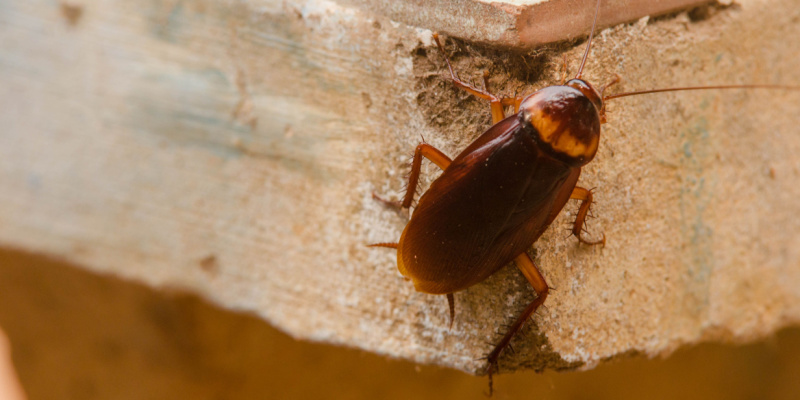Picture this: you come home after a long day of work, ready to unwind in the comfort of your apartment. But as soon as you step through the front door, you’re greeted by an unwelcome surprise – a trail of ants marching across your kitchen counter. Sound familiar? If you live in the NYC area, chances are you’ve encountered your fair share of pest problems in apartment buildings. From roaches scurrying through hallways to bed bugs invading bedrooms, these tiny intruders can turn any dreamy abode into a nightmare. In this article, we’ll explore the common pests plaguing apartment buildings in the NYC area and offer some tips on effective solutions for property managers, landlords, and tenants.
The NYC Area and Its Pest Challenges
The bustling urban environment of the NYC area provides an ideal habitat for pests. Several factors, such as the high population and climate, contribute to the prevalence of pest problems in apartment buildings.
1. High Population Density
NYC’s population density is among the highest in the world, with residents living in close proximity to one another. This proximity can facilitate the rapid spread of pests between units and buildings.
2. Shared Spaces
Common areas in apartment buildings, such as lobbies, hallways, trash rooms, and basements, offer pests like rodents and cockroaches numerous hiding places and access points.
3. Favorable Climate
NYC’s climate-controlled apartment buildings provide pests with stable temperatures year-round, making them attractive places to seek shelter.
4. Abundant Food Sources
Pests are drawn to readily available food sources, and apartment buildings offer plenty of opportunities for foraging, especially in kitchens and common spaces.
Common Pests in NYC Apartment Buildings
Several pests are particularly prevalent in NYC apartment buildings.
- Cockroaches
Cockroaches, especially the German cockroach, are a persistent problem in the NYC area. They are known for their adaptability and ability to hide in small crevices.
- Rats and Mice
Rodents are attracted to food and shelter, making apartment buildings an ideal habitat. They can carry diseases and cause structural damage.
- Bedbugs
Bedbug infestations can spread quickly in apartment buildings through shared spaces and infested furniture.
- Ants
Various ant species, including the odorous house ant and pavement ant, can be common nuisances in apartments.
Challenges Faced by Property Managers and Landlords
Property managers and landlords in the NYC area encounter several challenges when dealing with pest problems in apartment buildings.
1. Legal Responsibilities
Landlords are legally obligated to maintain habitable living conditions, which includes addressing pest infestations upon tenant complaints.
2. Tenant Turnover
Frequent tenant turnover can facilitate the spread of pests. New tenants may unknowingly bring pests with them, contributing to the persistence of infestations.
3. Shared Spaces
Managing pest prevention in common areas can be challenging, as it requires coordination among tenants, property management, and pest elimination professionals.
4. Rapid Reproduction
Pests like cockroaches and rodents reproduce rapidly, making it crucial to address infestations promptly.
Effective Solutions for Pest Problems
Addressing pest problems in NYC apartment buildings requires a proactive and coordinated approach between landlords, tenets, and pest elimination professionals.
1. Routine Inspections
Property managers should conduct regular inspections of common areas and individual units to detect early signs of infestations.
2. Prompt Action
If pests are detected, landlords must take immediate steps to address the issue. This often involves hiring licensed pest management professionals with expertise in the specific pest species.
3. Professional Pest Elimination
Pest prevention professionals develop customized treatment plans based on the type and extent of the infestation. These plans may include bait stations, insecticides, and preventive measures.
4. Tenant Cooperation
Tenants play a vital role in pest management efforts. They should promptly report signs of pests, cooperate with pest professionals during treatments, and follow recommended prevention measures.
5. Educational Programs
Landlords and property managers can implement educational programs to raise awareness about pest prevention and eradication among tenants and building staff.
6. Preventative Measures
To prevent future infestations, seal entry points and gaps in walls, floors, and doors. Regular maintenance, such as fixing leaks and ensuring proper insulation, can also deter pests.
Legislation and Pest Management
The NYC area has regulations in place to address pest elimination in apartment buildings. These regulations ensure that landlords meet their legal responsibilities to provide habitable living conditions.
In the dynamic urban landscape of the NYC area, a collective commitment to creating pest-free living environments in apartment buildings is necessary to ensure the health and comfort of all residents. From rodents to bed bugs, these pests can cause significant damage and health risks for residents. However, there is a solution. By contacting Systematic Pest Elimination, you can ensure that your apartment building is free from pests and create a safe and comfortable living environment for all tenants. Take action today and say goodbye to unwanted guests in your apartment building.




